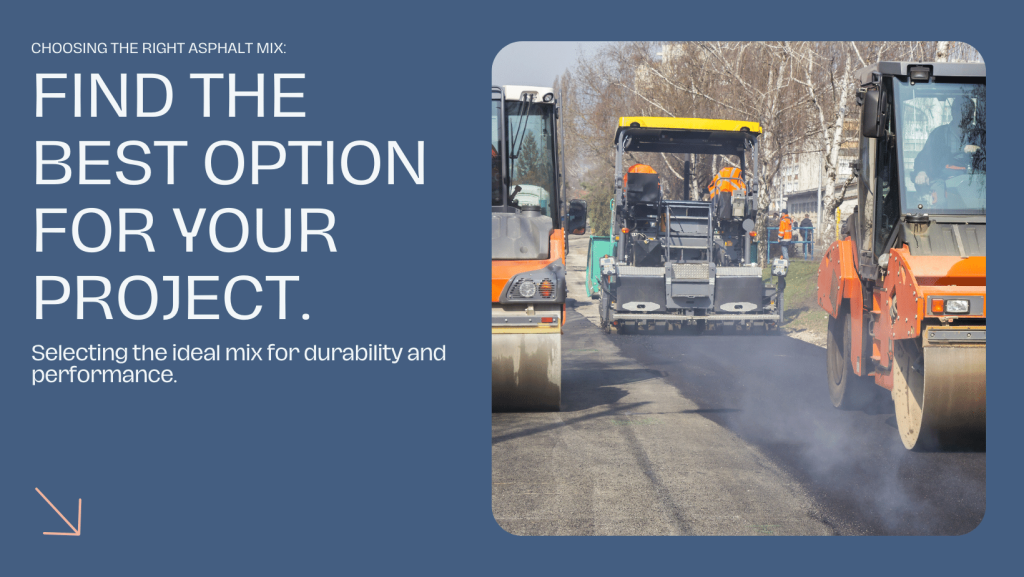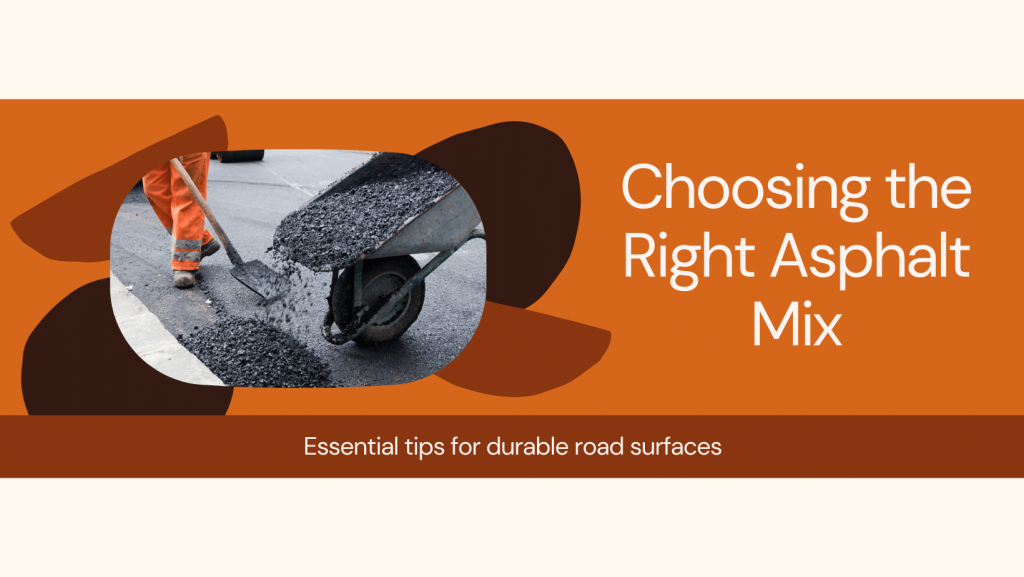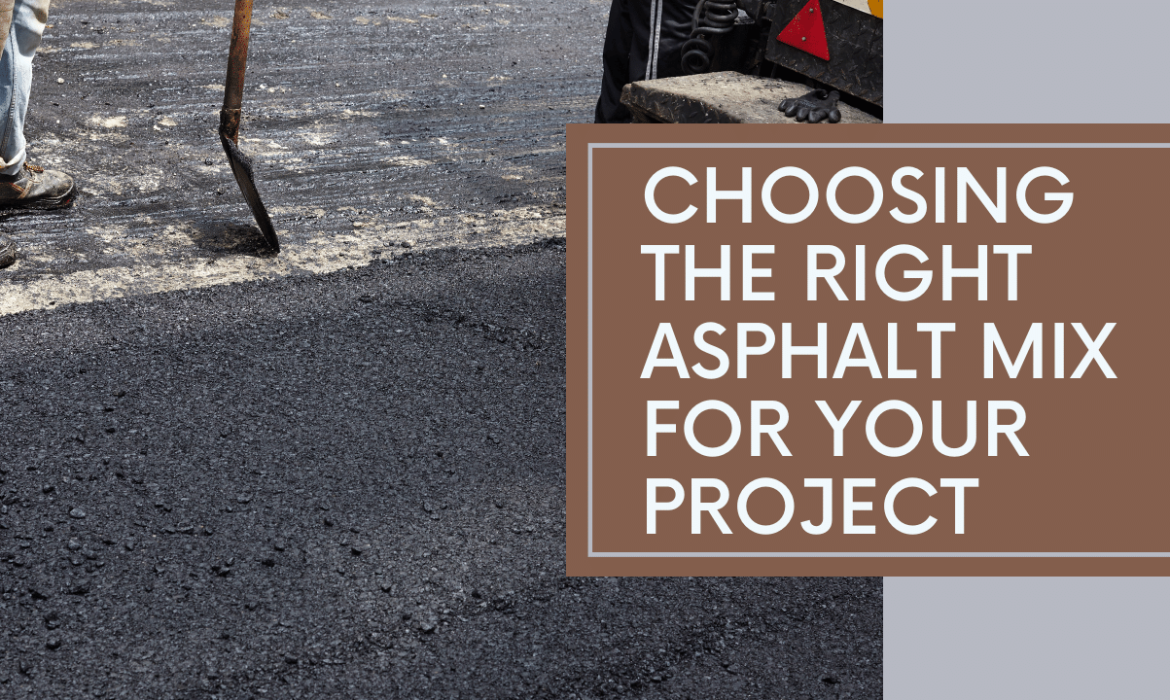In general, choosing the appropriate asphalt mix for paving is one of the most critical decisions in an asphalt paving project. Asphalt mix is one of the most essential factors to be considered when laying pavement since there are different types of asphalt mixes available, and each has its properties, merits, and disadvantages. It is, therefore, imperative that the correct type of asphalt mix is chosen since it affects the durability, efficiency, and overall cost of the paving project. In this article, we give an overview of the various asphalt mixes and the factors that should guide you in selecting the right product for your project.
Asphalt mixes are classified according to performance grade, and this is a way of categorizing the mixes according to their physical properties and how suitable they are in relation to heat and cold. Everyday performance grade designations include:

PG 64-22: A high-traffic asphalt binder that works well for roads under temperate conditions. High pavement temperature endurance level of up to 64°C while the low temperatures are as low as – 22°C.
PG 70-22: They can also withstand high temperatures, making it suitable for hot climates.
PG 76-22: End-use classification for areas where the temperature is above the extra high range of the climatic zone.
PG 64-28: This is best for cold areas and works well in extremely low temperatures of -28 degrees Celsius.
The first number indicates how heat resistant the asphalt is, and the closer to 100 it is, the better its performance. The second number signifies that the lower it is, the more cold-resistant the material will be. Select a grade suitable for the climate of the area where it will be installed and the traffic that the area receives.
Asphalt Mixes by Type
Beyond performance grade, asphalt mixes fall into different types designed for specific applications:
Hot Mix Asphalt (HMA)
The most widely used type of asphalt is hot mix asphalt (HMA), which is created at a batch plant at high temperatures and delivered to the required project site in molten form. It gives a longer working time for compaction and a more lasting end product. It is an all-round solid material for most paving jobs, from those small ones like car parking lots to large ones like trunk roads.
Cold Mix Asphalt
Cold mix, on the other hand, employs an emulsion binder system in place of hot asphalt cement. It is non-perishable and can be stored for use at any time of the year without heating. The process is faster than hot mix, but the curing time is longer, and the strength is somewhat less. However, it is adequate for low-traffic roads such as driveways, paths, repairs, and temporary works.
Warm Mix Asphalt
Warm-mix asphalt is typically made at a lower temperature than hot-mix asphalt in an attempt to conserve fuel and minimize emissions. It contains motor oil ingredients that do not allow the mixture to become too hot and cause fumes and that would enable better compacting. The final outcome is an aggregate that behaves in the same manner as a regular hot mix asphalt.
Open-Graded Friction Course (OGFC)
Asphalt mixed with open graded structure or porous with a minimum of 15%-20% air voids, the OGFC layers enhance drainage to reduce chances of hydroplaning and skidding accidents. OGFC is often utilized on high-speed highways. This is because little depressions open up to the surface to allow storm water to drain and prevents having pools of water on the surface.
Stone Matrix Asphalt (SMA)
SMA consists of substantial quantities of crushed stone or minerals for enhanced interlock of rocks as well as a stabilized binder to coalesce the aggregates. It offers excellent rutting control and the potential for long service life on heavily trafficked highways. This is due to the enhanced surface friction, so it is advisable to use at traffic hub junctions.
Selecting the Appropriate Type of Asphalt Mixture
When selecting the appropriate asphalt mix for a project, factors to be taken into consideration include climate and weather conditions, traffic loading, the type of vehicles (car or truck), the desired pavement performance, and the cost of the mix initially and in the long run. It is important to note that an overlay project may require a different mix than a new road construction or paths and driveways.

Consult your paving contractor and the supplier of your asphalt to make the right decision on the correct mix design to be used, as well as the materials. Selecting the appropriate asphalt pavement mix will ensure that the finished product will have long wearing properties as well as a longer service life.
In conclusion, consider various factors when selecting the asphalt mix type best suited for your climate, traffic load, and pavement requirements. In addition, when in doubt, consult with paving professionals.

